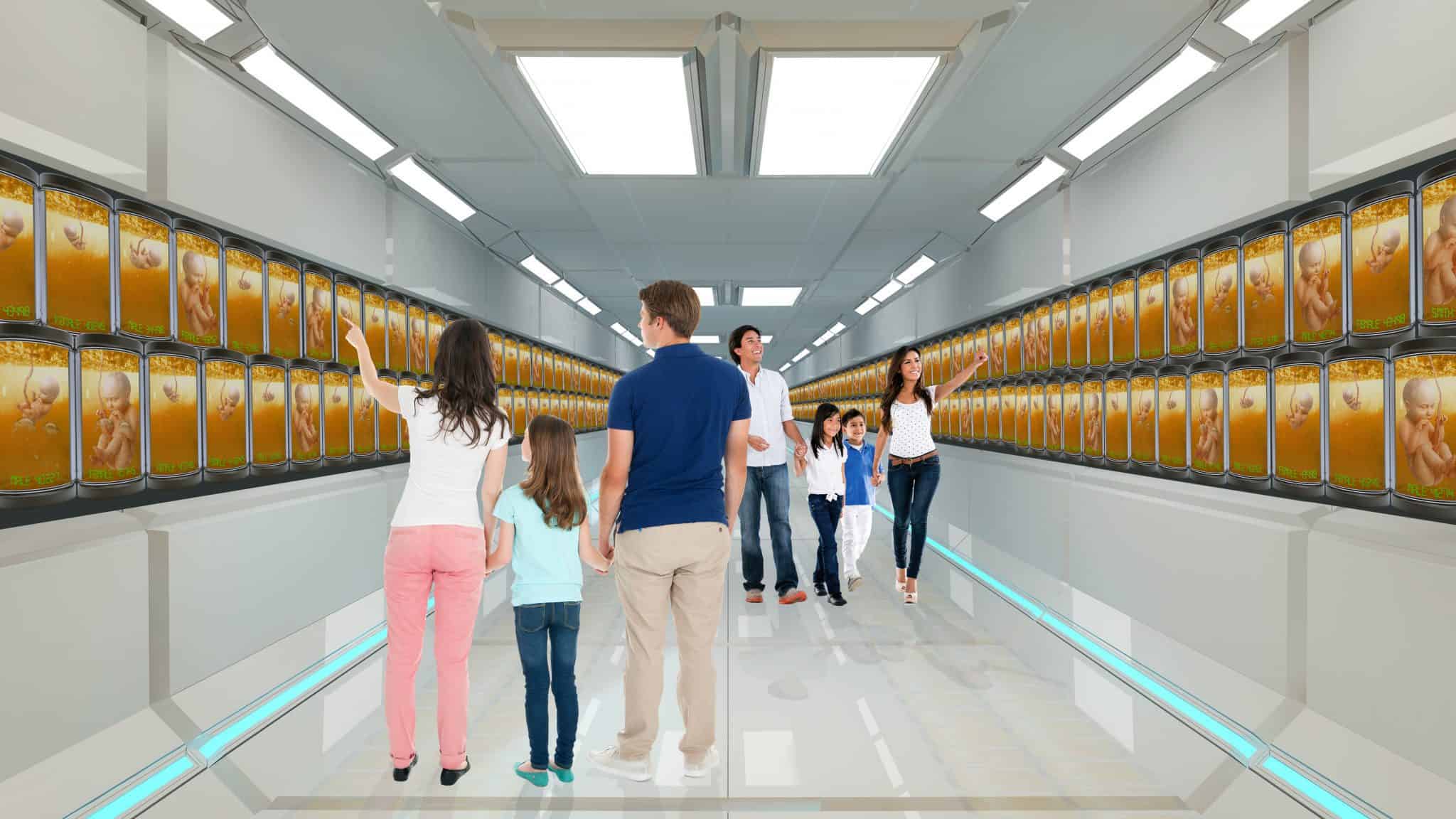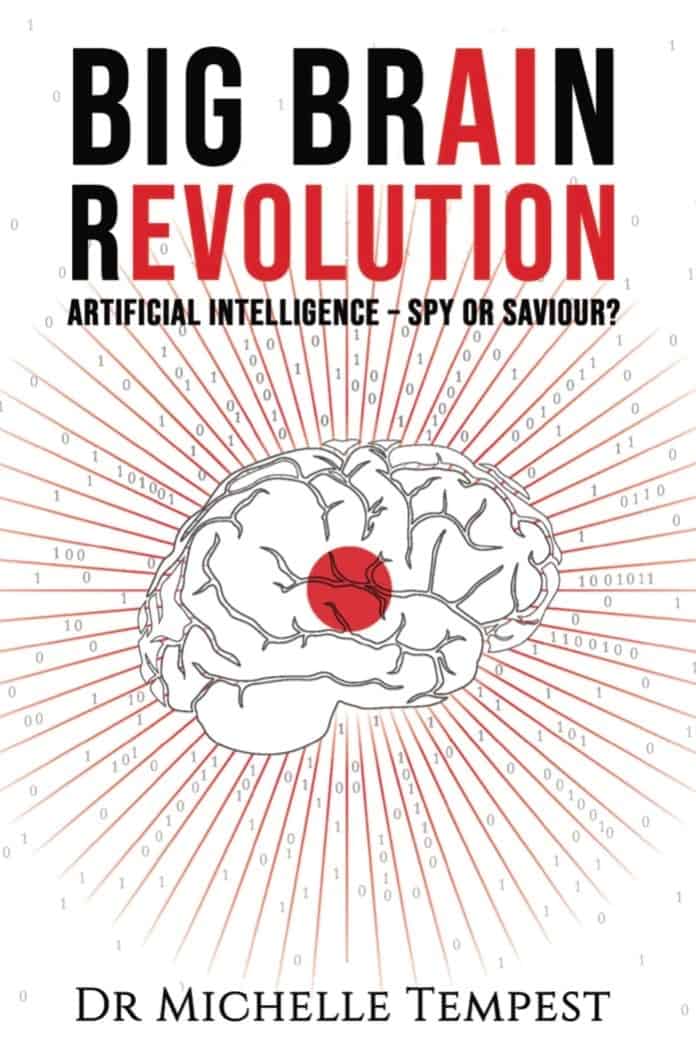By 2050, parenting as we know it will be “entirely optional” with robots and monitoring systems powered by sophisticated machine learning able to care for children from birth to adulthood.
Mums-to-be will not even need to carry their own baby during pregnancy, with artificial uteruses becoming the “tech-savvy” way for foetuses to develop in safety.
Technology will be so smart that parents will be able to outsource childrearing 24/7, 365 days a year, to purpose-built ‘Upbringing Centres’ that look after their children’s every need.
There, they will interact almost exclusively with digital avatars and automatons that combine the role of “nurse, nanny, teacher and therapist” all in one.
Mums and dads will, in effect, have the option of becoming “holiday parents”, who need only to spend time with their children on day trips and family vacations, Dr Michelle Tempest believes.

Parents will see only their children’s “best bits” and avoid sleepless nights, dirty nappies, the terrible twos, teenage tantrums, hormonal angst and relationship dramas.
Though it may sound like something straight out of science-fiction, AI specialist Dr Tempest thinks that the majority of parents will readily adopt the convenience of outsourced parenting – just like they outsource shopping and simple household tasks today.
This could lead to as many as one-in-three children of the future being raised by robots in human-free zones.
Dr Tempest, a former NHS doctor at the internationally-renowned Addenbrooke’s Hospital and talking therapist, is a partner in international healthcare strategy consultancy, Candesic.
The company, which advises public sector and investors about integrating AI and other emerging technologies into the care sector, is currently supporting the rapid digital response against coronavirus.
She said the prospect of robotic parenting is “alarming but, for many, irresistible” based on the rapid rate of AI innovation and on the public’s heavy reliance on and propensity for outsourcing.
The troubling vision is laid out her new book, Big Brain Revolution: Artificial Intelligence – Spy or Saviour?, which is out now.
Speaking from her home in Cambridge, Dr Tempest said: “The field of artificial intelligence is developing at an unprecedented rate, making things possible that we couldn’t even dream about just a decade before.
“If progress continues at the same rate then it is only logical, and entirely plausible, that AI could replace parenting as we currently understand the term.
“Within 30 years, those wishing to have children could, effectively, outsource the entire parenting experience to AI should they wish to.
“In other words, human parents would no longer be necessary to raise a child once it has been conceived. They will become as obsolete as floppy discs are today.
“Mums and dads would pay for this service just like they do now for many simple tasks like cleaning, babysitting and gardening.
“In so doing, parents will have the tempting option to only be present for their child’s best bits and to avoid anything else.”
“They would be holiday parents who get to pick and choose when to interact with their children, avoiding the difficult times to focus exclusively on pleasurable experiences such as days out at the park, birthdays or family trips.
“It might seem abhorrent to us, but as technology becomes more and more embedded in society I can see attitudes changing. I do believe that outsourced parenting could prove very attractive as it becomes considered socially acceptable.”
Artificial intelligence (AI) is a branch of computer science focused on making smart machines that can ‘learn’ from experience and their surroundings, enabling them to adapt to new situations and perform tasks that previously could only be done by humans.
The field of AI was created in 1956 at a conference at Dartmouth College in Hanover, New Hampshire, where the term “artificial intelligence” was coined by American computer scientist John McCarthy.
At the time, scientists were optimistic about the ‘problem’ of creating AI being solved within a generation, but it is only in recent decades that substantial progress has been made.
The historic victory of the IMB-built Deep Blue computer against then-reigning chess champion Garry Kasparov in a six-game match in 1996 brought AI firmly into the public consciousness and it has continued to develop apace from there.
Today, AI systems can use machine learning to spot and recognise patterns in large sets of information, which could include body metrics, speech, text data, or visual images.
In the process, AI may learn things about human development that no biological parent could piece together.
Such unsupervised learning has been the basis for a large number of the developments in AI over recent years.
Futurists, however, have long warned that AI-powered robots will end up replacing humans in the accounting, client management, industrial, postal and secretarial sectors.
And in 2018, the World Economic Forum predicted that more than half of all tasks in the global workplace will be carried out by machines by 2025.
But Dr Tempest, who advises international investment firms and national healthcare organisations including the NHS about emerging AI technology, believes that AI will also become commonplace in the care sector.
Parents already rely on AI in smart baby monitors to check their baby’s breathing, and in teaching platforms to help educate children.
Similar technology, meanwhile, is used by millions of families worldwide in virtual assistants like Amazon’s Alexa.
Dr Tempest said parents’ reliance on AI will only continue to expand as new labour-saving technology comes to market.
Within 30 years, that dependency will have reached the point where society will view parental outsourcing as the norm.

When that time comes, artificial uteruses – tubes filled with amniotic fluid and a nutrient-rich blood supply to bring a foetus to term without ever being in the natural mother—will be the standard means of ‘giving birth’.
Such a machine is still at the concept stage but, in 2017, researchers at the Children’s Hospital of Philadelphia (CHOP) in Pennsylvania, America, made a significant stride forwards with a fluid-filled ‘biobag’ that allowed premature lambs to develop outside the womb.
While there are significant ethical issues surrounding the issue of pregnancy conducted outside of the uterus, or ‘ectogenesis’, that have yet to be resolved, in theory it would allow women to continue their lives as normal while eliminating the risks to the unborn child should the mother become ill or suffer injury.
Once a baby is born, it would be transferred to an ‘Upbringing Centre’ where the development programme would be individualised.
Here, they would be cared for and educated by AI-powered technology and robots attuned to their every developmental need until adulthood.
Dr Tempest says that technology companies will have their AI systems “learn from the best” parents, nursery nurses, teachers and child therapists to provide a bespoke childcare that any mortal human would struggle to provide.
With constant monitoring of the child, the AI would be able to detect and respond to their full range of needs—from hunger and soiled nappies to emotional and educational development issues—far quicker and effectively.
Software would then be able to adjust a child’s learning programme accordingly, direct mobile robots to attend to its requirements, or call for medical assistance.
The result, says Dr Tempest, would be a standardised system of childrearing that is “fairer” than at present, removing the differences in IQ or emotional intelligence that research shows can be caused by the disparity between wealthy and poorer parents, and levels of parenting interaction.
Though such centres would not require any human staff on-site, Dr Tempest adds that trained technicians would be on hand to supervise the children’s welfare remotely.
She said: “Upbringing Centres, as I have called them, will feature state-of-the-art technology to monitor the children in their care around the clock.
“Some parents already use smart sensors to detect when a nappy is wet and the next generation will have a robot carrying out nappy changes as well as ensuring the baby has a healthy balanced food and fluid regime.
“For older children robots or supercomputers will be able to provide age-appropriate education and emotional support. If the child struggles in any domain – say language or emotions – then the programme would be adjusted to focus help and development in that area.
“It will also be able to benchmark development against other children. Monitoring trackers will allow AI to amass and analyse big data to globally understand a child’s capability. Parents could look at a dashboard to compare their child’s reading ability or mathematical acumen against other children of a similar age – accessing variation of brain development of their child against global comparisons.
“Chillingly, childrearing will become standardised, limiting variance in personality but others would say that democratising nurturing would mean that every child would have the same chance of success in later life.”
Dr Tempest, who teaches ethics and law at Cambridge University, added: “Parents would effectively get to pick and choose when to interact with their children, avoiding the difficult times to focus exclusively on pleasurable experiences such as days out at the park, birthdays or family trips.”
But whilst the prospect of robotic parenting might be tempting, Dr Tempest, whose new book investigates how advances in AI are invisibly changing society and the human mind, warned that it could lead to a generation of “human automatons”.
She added: “The new debate is how digital may take over from Darwinian evolution. We simply don’t understand at the moment how society will be affected by technology.
“For instance, studies have shown that the fine motor skills of an average five-year-old child are declining as they become more used to swiping a tablet than using a pencil.
“The risk, if this goes unconsidered and unchecked, is that in becoming reliant on AI we may end up losing our capacity for critical thought and that intangible quality of being ‘human’.
“There needs to be an open an urgent debate about how far as a society we are willing to outsource our daily lives to technology.”
Dr Tempest adds that the rise of outsourced parenting could also present its own particular problem for the future development of humanity: the creation of a new generation of self-centred humans devoid of any parent/child bond or empathy.
She said: “The risk with outsourcing parenting is that it could remove parenting of its emotional rewards at the same time as stripping away the downsides.
“Both children and parents would be in danger of losing that unique connection between them, and becoming narcissistic and self-centred as a result.
“Children would grow up without really knowing the value of a mum or dad, and with the expectation that their every need is met immediately, and without consequence.
“Parents, meanwhile, would never experience the challenges of bringing up a child that, ultimately, are greatly rewarding and help them grow as people.”
Big Brain Revolution: Artificial Intelligence – Spy or Saviour? by Dr Michelle Tempest, a partner in healthcare strategy consultancy company Candesic, is out now, priced £9.99 (paperback); £11.99 (hardcover) and £3.50 (eBook). Visit Amazon.
EXCLUSIVE INTERVIEW WITH DR MICHELLE TEMPEST
We speak to AI expert Dr Michelle Tempest, author of Big Brain Revolution: Artificial Intelligence – Spy or Saviour?, about why we should all take an active interest in the development of artificial intelligence, how AI could be applied in the future, and what we can do to protect our minds from the potential risks of a growing reliance on technology.

Q. There has been a lot of excitement about the potential for AI in tech circles. Why is it such a big deal?
A. Artificial Intelligence (AI) is already integral to of our world – everything from robots in factory assembly lines to facial recognition on a mobile phone. AI can beat humans at chess and computer games. The beauty of AI in the future is that, with access to large diverse data sets, it will help us solve problems that no single human brain could ever compute.
Take the example of the recent Covid19 pandemic. Globally AI can help with everything from tracking the virus to shortening the timeline of drug discovery. AI is no longer just a big deal in tech circles; it has permeated all sectors.
Q. You are calling for society to openly debate our use of AI in the future. Why do you think this is important to do now, and why can’t this be left to policy makers?
A. I’m excited about how AI can be used to help solve complex problems, but I also believe important questions loom for our generation. A critical crossroads has finally been reached where AI and human psychology are starting to coincide. It’s therefore become personal.
Policy makers will need everyone to help them think through the future direction of travel. Technology is starting to tap into the human brain in a way it has never been able to do before – AI is being used to decode brain waves and there are even studies about how AI can learn to read your mind. It’s still early days, but it’s never too early to think through consequences of how AI may impact everyday decision making.
Q. How is a growing reliance on technology changing our brains, and what are the dangers of the influence of technology on our minds?
A. The beauty of the human brain is that it is unique as a snowflake and is never static. Cerebral connections are being constantly made throughout life. This opens up questions about how our brain can be changed by technology. Take the simple activity of using a GPS tracker to navigate our route on a new journey. Nearly everyone outsources this task. But just like unused muscles, cerebral networks shrivel when they are not used. The potential danger moving forwards is that as we outsource more to AI technology, our brains will stop thinking from first principles. Maybe outsourcing will help humans become more advanced, but what happens if instead brains become lazy and reliant on technology? One could extrapolate – the human brain may be less able to make complex decisions without guidance.
Q. We already live in a heavily-monitored world. With advances in technology and AI, what do you think the next stage of this surveillance will be, and what will be the main applications?
A. There is a famous saying by the author of How to Win Friends and Influence People, Dale Carnegie: ‘when dealing with people you are not dealing with creatures of logic, but with creatures of emotion.’ The next stage of surveillance is already happening – reading emotions. Reading facial expressions is an academic discipline, known as ‘affective computing’, used to recognise, interpret, process and stimulate human emotions. It’s already commonplace for AI or Facial Action Coding Systems (FACS) to interpret facial micro-expressions, including subtle involuntary expressions as a method of understanding an emotion. It can be helpfully deployed to recognise when a student is maybe struggling with a given topic, allowing the lesson to be slowed. As technology advances, it is joining up the emotional dots; it will link data from facial expressions, body language, verbal content, verbal tone and the written word – developing what I call the ‘emotional economy’. Of course, taken to the next level it will be able to decode brain waves so fast it will know your emotion before you have even felt it. Now that’s the scary part!

Q. AI has been a technological buzzword for many years, but it still seems in its infancy and largely unobtrusive in the way we live our lives. Why do you think progress has been slow, and how do you think this may change in the coming decades?
A. The first use of the term ‘AI’ can be traced back to 1956 and it has certainly experienced both ‘ups and downs’. Looking to the future, I would say the paradigm shift is unsupervised learning – or machine learning. Before, computers could only learn via supervised learning, requiring a human to teach them. Unsupervised learning takes AI to the next level, no longer needing humans. AI could be given a big messy mass of data and be blissfully naïve about what any of the data means. Then it looks for patterns. It does not need to know what it is looking for nor be told what are the connections – it works it out. Once clusters have been identified then predictions can be made for new inputs. That’s the astounding part. Recently, machine learning was used to spot patterns in retinal images – photographs of the back of the eye. AI learnt to not only spot patterns of disease but even learnt how to tell if the retina is from a male or female – even expert ophthalmologists don’t know how it has learnt to do this. It’s beyond current human ability.
Q. How can we best protect ourselves from the constant monitoring of a surveillance society, and why should we do this?
A. The public are right to question how much of their own data should be accessible and how much they wish to be monitored. The Chinese government, for example, have developed a Citizen Scoring system. It connects to surveillance footage and uses facial recognition to record the day-to-day activity of people on the street, such as: if you wait for the green man before crossing the road; how long you spend on your mobile phone; or if you arrive to work late. It then combines this information with credit card history, speeding tickets and smart home statistics and calculates a number for each person. The total citizen score has consequences. For example, if someone has a high score then they can travel in the VIP lane in Beijing airport. But if a parent gets a low score, their child may be excluded from top local schools. Dog owners can drop points if their pet misbehaves and they are automatically enrolled onto an animal behaviour course. The question soon becomes does the dog wag the tail or, in the future, will the long data tail wag the dog.
Q. Is there anything we should be doing to stop our brains from getting flabby with our increasing reliance on technology?
A. Healthy thinking as a topic is currently overlooked by society, despite the fact that healthy eating so easily trips of the tongue. People care about what food they ingest into their bodies yet few think about how their brains are passively subjected to a barrage of pings, rings and dings of digital updates. In the future, healthy thinking will require the brain to be put centre stage and nourished just as the body deserves more than junk food.
Perhaps the most important mitigation is to think about potential consequences of outsourcing decisions. Instead, activate reflective thinking by introducing questions into decision- making. Temper emotional urges, delay gratification, foster moral awareness and lead by example – don’t follow the crowd. Protect your brain, perhaps by using the same natural skills developed when seeking out a good bargain; stay ahead of the curve when making a deal, shop around before investing and know when to walk away.
Q. Nobody can say for sure what the AI revolution will bring, but what one potential application do you think could change society the most?
A. Many eminent scientists think that AI will catapult human existence into space. But my interest remains far simpler, and centres around what will happen, here on earth, to the human mind. If AI changes the brain, by definition, it impacts the essence of thinking, personality, humanity, spirituality and society. My motivation is to encourage everyone to enthusiastically be inquisitive about how AI could evolve their own brain. Nobody has a crystal ball so there can be no right or wrong answer. Personally, I make the case that AI is set to radically change both nurture and nature. If caring for children, patients and the elderly is increasingly delivered by AI, the human nurturing instinct could unwittingly and unknowingly decline.
Q. There are numerous risks to relying heavily on AI but can you point to a few cases where AI-assisted technology has already made our lives better?
A. AI can indeed be a force for good – as long as we guide policy makers away from nefarious uses and get AI to be part of the plethora of solutions for climate change, global pandemics and detecting illnesses far earlier than a human doctor. One of my favourite examples is how hospitals are using AI to help with surgical robots, reading of radiology scans, and monitoring patients round the clock and in real time. This means that some digitally-enabled hospitals are live-tracking blood results and vital signs and have developed AI to spot signs of sepsis (infection), alerting the medical team to start treatment long before the illness has taken hold. That’s literally AI saving lives.

